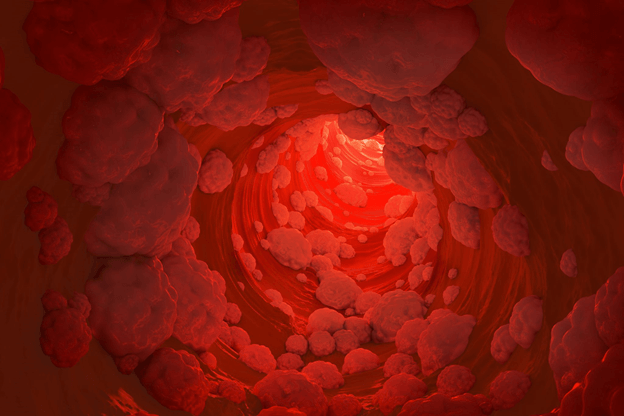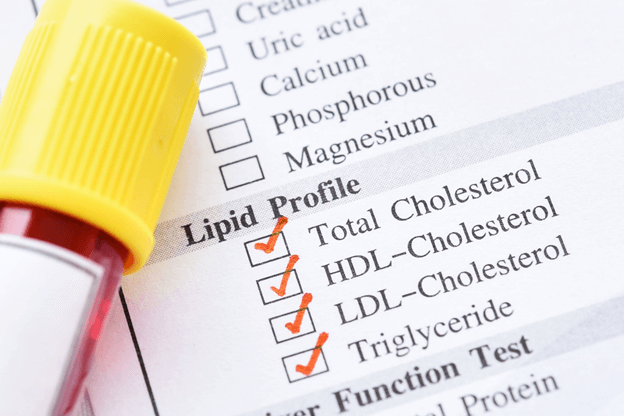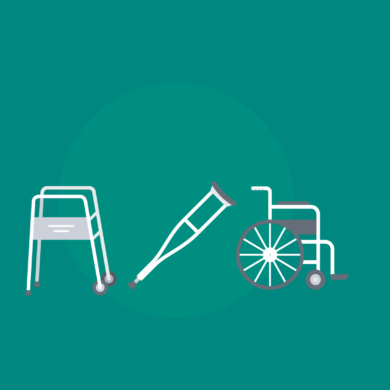As people get more aware of potential health issues, awareness and knowledge become extremely important in our bid to live better and longer. One of those issues that can crop up is that of hyperlipidaemia, a medical term that refers to abnormally high levels of fats or lipids in our blood. You may also know it as a more familiar term, high cholesterol.
Understanding Hyperlipidaemia
When it comes to lipids, there are two major types that can be found within our blood – triglycerides and cholesterol.
Triglycerides and Cholesterol
The former is made when the body stores additional calories not needed for energy, and can also come directly from our diet. The latter is produced naturally in the liver, and can also be obtained from food as well.
In terms of cholesterol, it can be further divided into two aspects. Low-density lipoprotein (LDL), also known as bad cholesterol, carries fat from the liver to other parts of the body. High-density lipoprotein (HDL), also known as good cholesterol, carries fat and cholesterol to the liver for breakdown.
Triglycerides and Cholesterol
As a nation, Singapore is definitely not immune to the effects of hyperlipidaemia. However, with enough education and initiatives, things can be turned around.
The proportion of adults aged 18 to 69 years with high total blood cholesterol decreased from 18.7% in 2004 to 17.4% in 2010. That is good progress being made in the fight against high cholesterol, however, of those found to have high blood cholesterol, 44.1% have not been previously diagnosed. There is still much work to be done.

Diet is Key
What you eat can significantly affect you when it comes to the chances of hyperlipidaemia. Any diet that is high in refined sugar or alcohol can increase your triglyceride levels, while a diet heavy in fatty foods such as cheese or red meat in excess will increase cholesterol levels.
Effects of High Cholesterol
While high cholesterol can be influenced by family history, it is largely attributable to lifestyle factors such as diet and lack of exercise. If you are affected, your body will undergo certain changes. Excess lipids will begin accumulating in the walls of our blood vessels, a process known as atherosclerosis.
This unwanted blockage of blood vessels can cause heart attacks and strokes.
Detecting High Cholesterol
Even though hyperlipidaemia is a dangerous condition, many may still live their lives without being diagnosed. That is because the condition is asymptomatic, and requires a specialised test to help in detection.
A lipid panel test measures total cholesterol (LDL & HDL), LDL and HDL levels, LDL/HDL ratio, and can provide the necessary information to help you and your doctor figure out your current status.

| Total Cholesterol | < 5mmol/L |
| LDL | < 3 mmol/L |
| HDL | ≥ 1mmol/L |
| Triglyceride | ≤ 2mmol/L |
| LDL/HDL Ratio | ≤ 3.5 |
Managing Hyperlipidaemia
Whether you are worried about potential problems that may crop up or looking to stave off the effects of hyperlipidaemia, there are some changes you can make to your lifestyle that will help.
Diet
Eating right goes a long way, and for adults, it is essential to keep your fat intake between 20 to 35 percent of calories.
If you already have the condition, you should avoid animal fat, shellfish, and egg yolks in your diet. Instead, prioritise fish, skinless poultry, and lean meat as healthier options. Alcohol can also increase lipid levels, so drink responsibly.
Exercising
It goes without saying, excess body weight will only increase your blood cholesterol. Therefore, staying active is very vital. Exercise also helps to increase HDL and decrease LDL, which is great for your health in general.

Screenings
As hyperlipidaemia is ultimately asymptomatic, it is crucial for everyone to consider going for regular health screenings. For adults above 40 years of age, it is recommended that you go for high cholesterol screenings every three years to keep on the safe side.
Those also suffering from hypertension or diabetes will need to be even more aware of the increased risks of atherosclerosis, as do those that smoke.
Medication
Lastly, if your lifestyle changes are not making the impact you need, medication may help to reduce lipid levels to a more acceptable range. Medication such as Simvastatin, lovastatin and Atorvastatin will help for high cholesterol, while Gemfibrozil and Fenofibrate can be helpful for those with high triglycerides.
Start Your Journey to Better Health Today
Hyperlipidaemia is a dangerous condition, but one that can be avoided with the right lifestyle choices and being aware of what to look out for. Prevent yourself from its harmful effects and make the right choices today.
By implementing healthy practices in your routine, you are protecting yourself and making sure others will do the same by following your great example.




